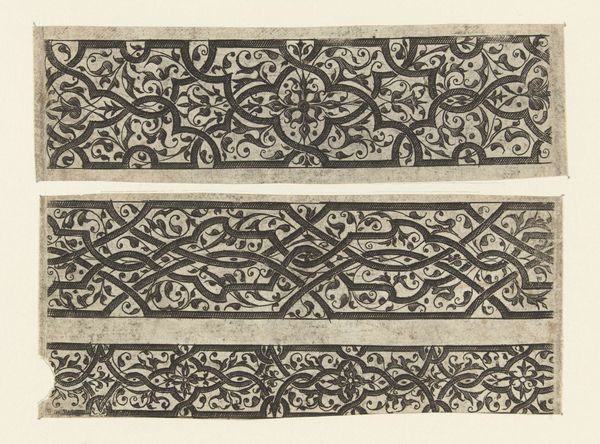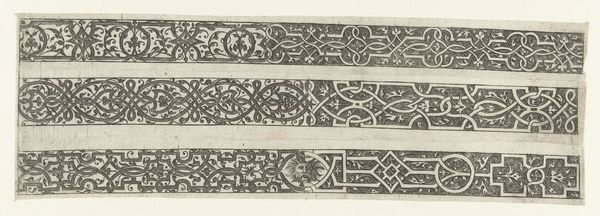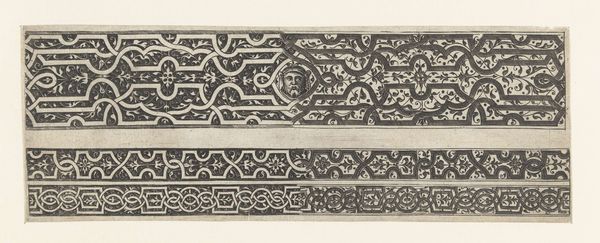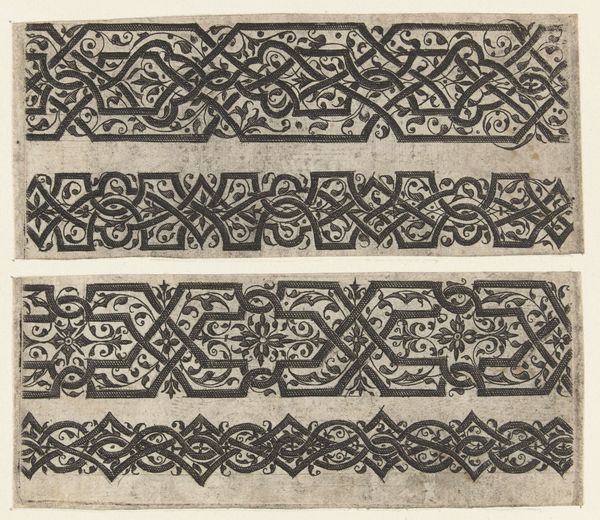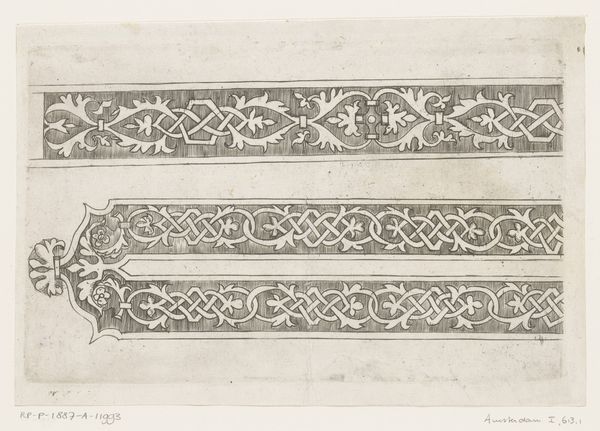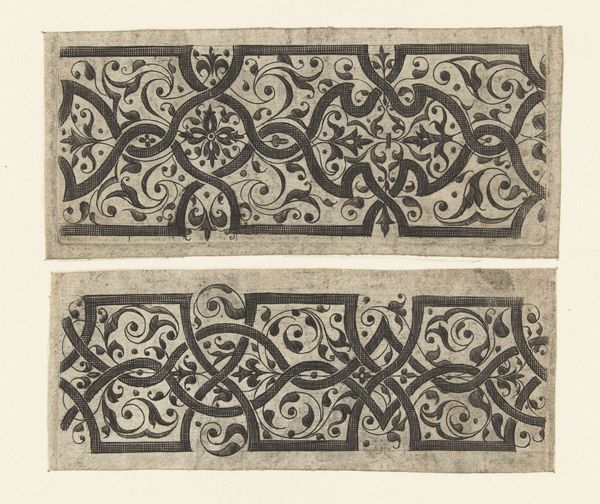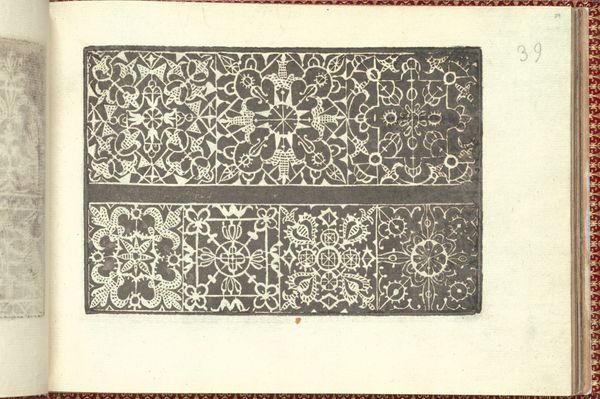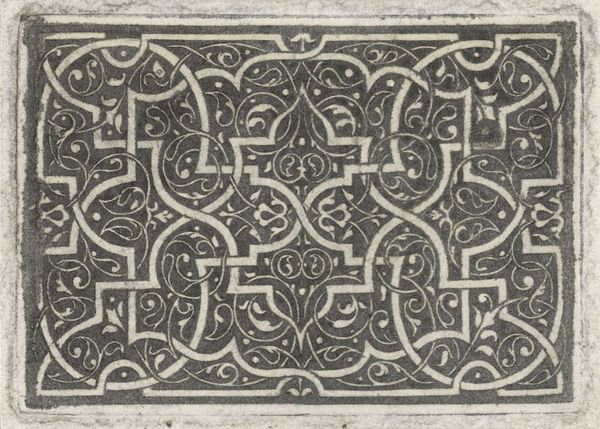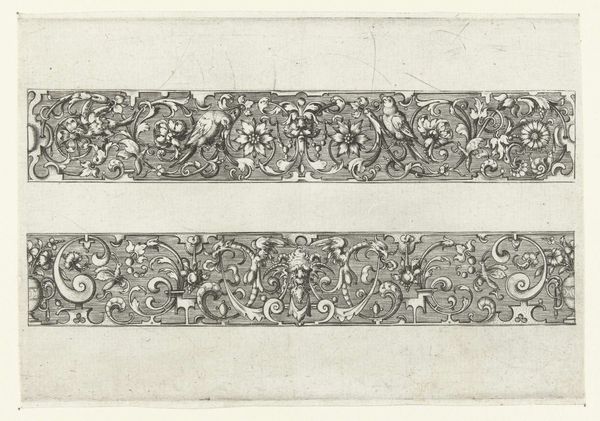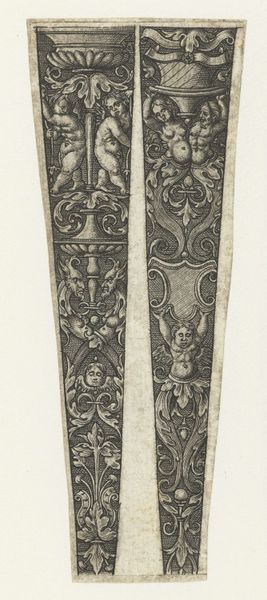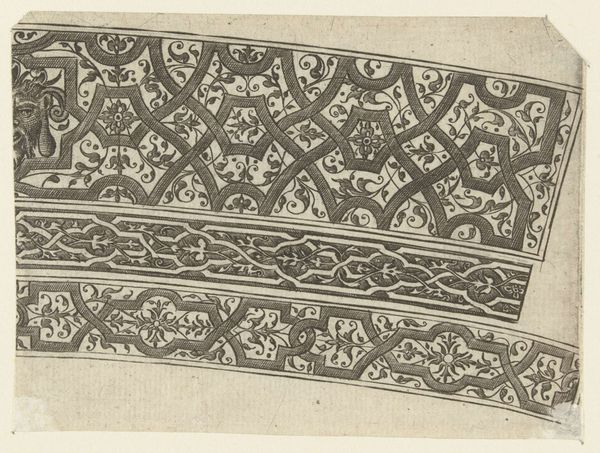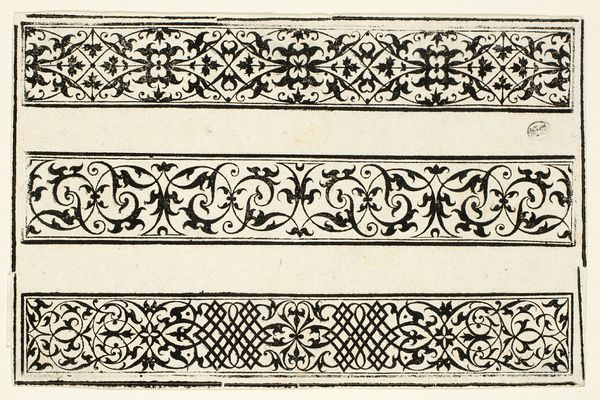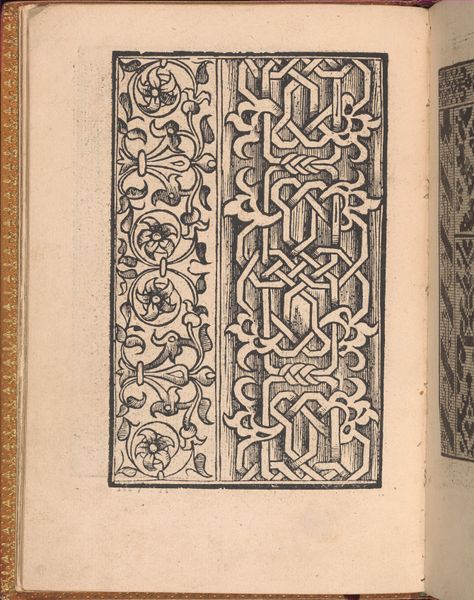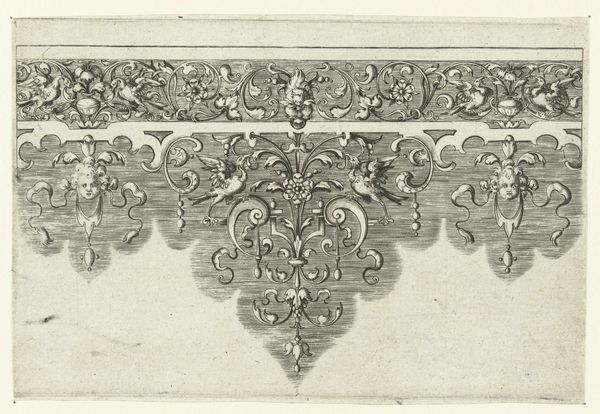
Drie friezen met moresken, in het midden van bovenste twee bevindt zich een mascaron 1550 - 1580
0:00
0:00
drawing, print, intaglio, woodcut, engraving
#
drawing
# print
#
intaglio
#
pattern
#
old engraving style
#
woodcut effect
#
11_renaissance
#
woodcut
#
engraving
Dimensions: height 91 mm, width 236 mm
Copyright: Rijks Museum: Open Domain
Curator: Here we have "Drie friezen met moresken, in het midden van bovenste twee bevindt zich een mascaron," created sometime between 1550 and 1580. It’s an engraving, intaglio and woodcut print—currently held in the Rijksmuseum collection. It presents three decorative friezes. What are your first impressions? Editor: Immediately, I’m struck by the intricacy and the feeling of endlessness within these patterns. The interweaving lines give the illusion of movement, a kind of visual labyrinth. The meticulous detail is astounding, considering the materials used. Curator: Absolutely. These moresques, or what we know today as arabesque patterns, speak volumes about the exchange of artistic ideas during the Renaissance. Their popularity grew in Europe alongside increased trade with the Islamic world. This piece reveals how Northern artists adopted and adapted these foreign decorative motifs. Editor: The visual language speaks volumes. These aren't just patterns; they are a visual shorthand. The interwoven lines might symbolize interconnectedness, the repeating motifs could signify the cyclical nature of life, or even allude to the divine order of the cosmos. Notice the mascarons—those grotesque masks incorporated—disrupting the flowing patterns; this placement adds an element of contrast and, dare I say, tension. Curator: Precisely, the grotesque masks serve as powerful emblems themselves. They might have functioned as apotropaic devices meant to ward off evil, strategically placed within this visually rich tapestry. They act almost as counterpoints to the organic flow of the arabesque designs. In terms of its function, this was likely used by artists and artisans as a sourcebook, something to inspire their own decorative work. Editor: Thinking about it, these types of symbols served not only to enrich visual culture, but also allowed for subtle dialogues on power and perception. An artist would recognize this interplay between the ordered arabesque and the anarchic grotesque face, which creates a stimulating emotional effect through these motifs. Curator: Well, looking at the impact on contemporary audiences and thinking of it now, such images shaped expectations about design in all areas. That is such a cultural and commercial force. Editor: Indeed. What appears initially to be mere decoration holds layers of historical, cultural, and symbolic meaning.
Comments
No comments
Be the first to comment and join the conversation on the ultimate creative platform.
